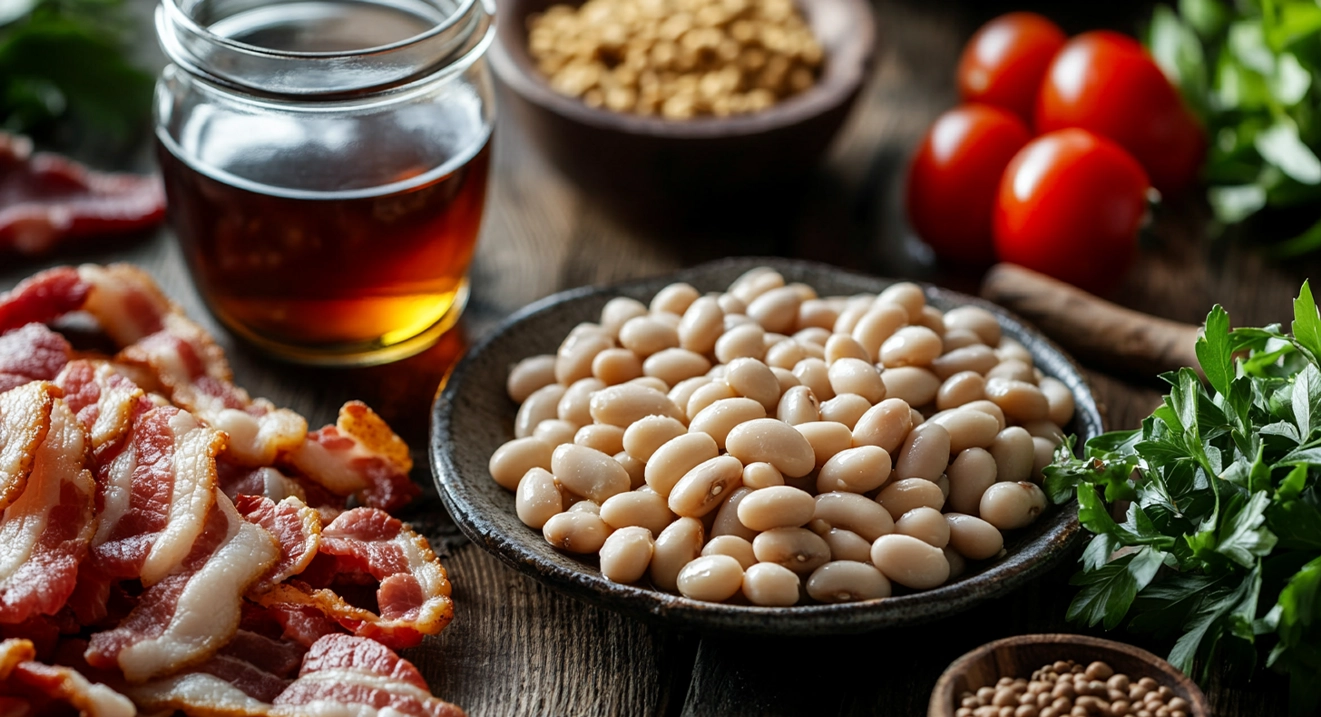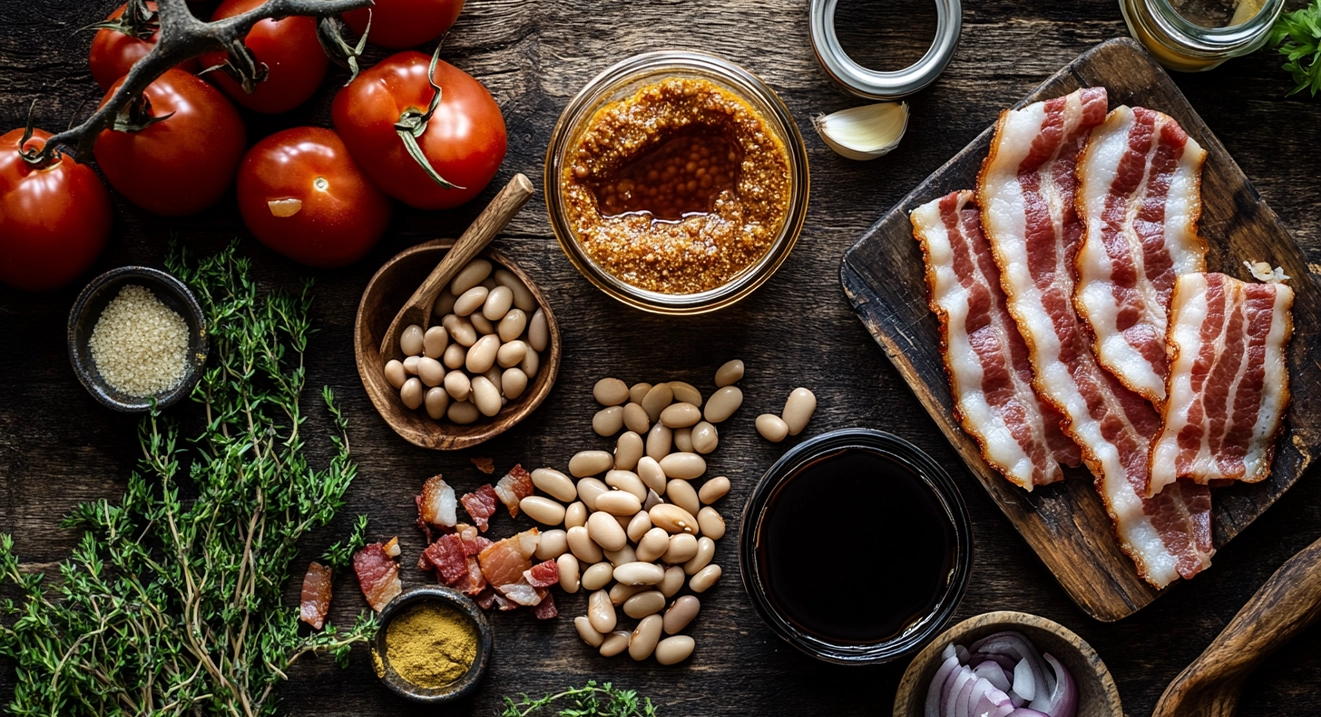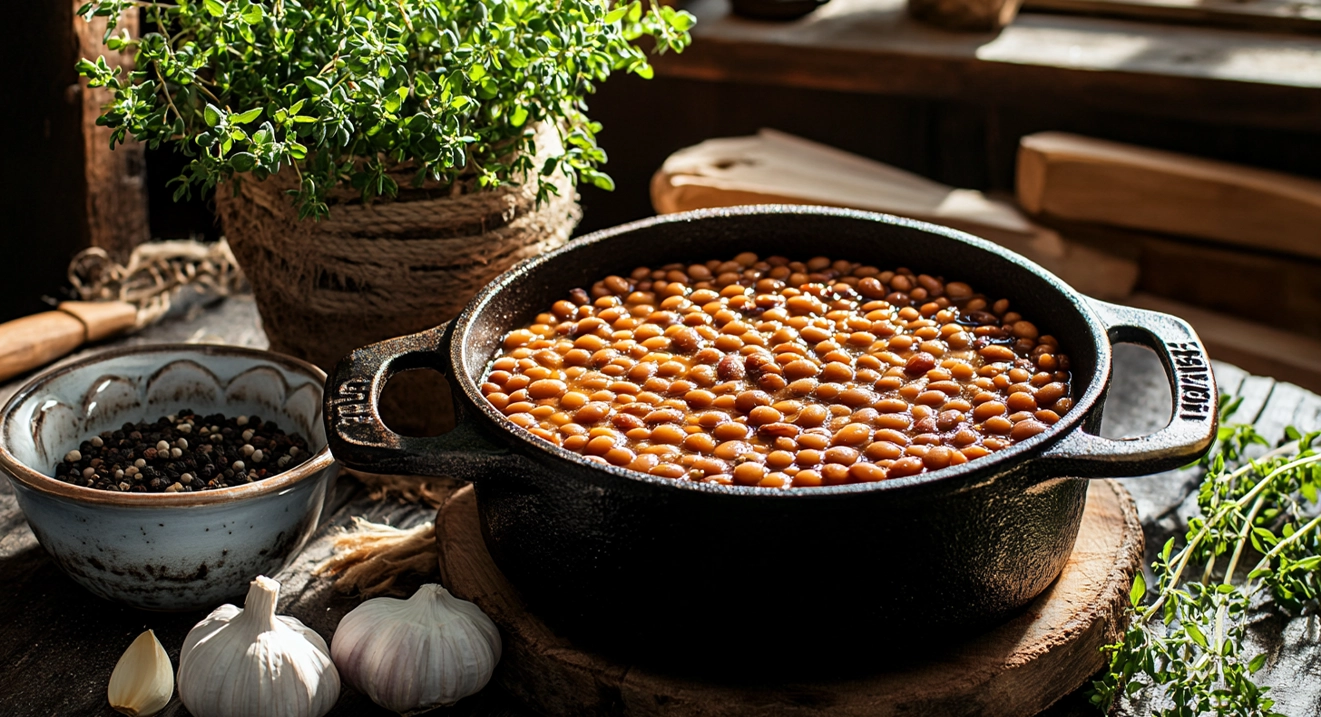The Ultimate Guide to Baked Beans: A Detailed Exploration

Introduction to Baked Beans
Baked beans are a beloved comfort food that has stood the test of time. They are a versatile dish enjoyed in various cuisines worldwide, known for their rich, hearty flavor and adaptability. Whether served as a side dish, a hearty breakfast, or a topping, baked beans have become a staple in many households.
The History of Baked Beans
The origins of baked beans can be traced back to Native American cuisine, where indigenous tribes in North America slow-cooked beans with maple syrup and fat. The dish evolved when European settlers adapted it, introducing ingredients such as molasses and pork.
In the 19th century, baked beans became popular in Britain, where they were embraced as a convenient, canned food product. Over time, they spread globally, with variations emerging in different regions to suit local tastes and preferences.
Why Are Baked Beans So Popular?
Baked beans have gained popularity for several reasons:
- Convenience: They are easily prepared and widely available in ready-to-eat canned form.
- Affordability: A budget-friendly option, baked beans are accessible to people from all walks of life.
- Nutrition: Packed with protein, fiber, and essential nutrients, baked beans are a wholesome addition to any meal.
- Versatility: From barbecues to breakfasts, baked beans complement a variety of dishes and cuisines.
Core Ingredients of Traditional Baked Beans
Baked beans owe their signature taste and texture to carefully chosen ingredients. Each component creates the perfect balance of flavor, sweetness, and tanginess.

Baked Beans – Types and Variations
The star of the dish is, of course, the beans. Traditionally, navy beans are the most common choice due to their creamy texture and ability to absorb flavors. However, other varieties, such as pinto beans, great northern beans, or cannellini beans, can also be used, offering slight variations in taste and texture.
For regional recipes, unique bean types might be preferred, showcasing the versatility of this humble legume.
Tomato Sauce – The Base of the Recipe
Tomato sauce is the rich and savory backbone of baked beans. This ingredient is made from tomato puree, paste, or ketchup, which provides a tangy and hearty base. To enhance the flavor profile, tomato sauce is often seasoned with paprika, garlic powder, and onion powder.
Sweeteners – Brown Sugar, Molasses, or Honey
Sweetness is essential to balance the acidity of the tomato sauce and provide the characteristic taste of baked beans. Traditional recipes often use brown sugar for its deep, caramel-like flavor. Molasses is another classic choice, offering a robust, smoky sweetness. For a lighter, more natural option, some recipes substitute honey.
Each sweetener brings its distinct depth of flavor, allowing for customization based on preference.
Vinegar and Acidity Balancers
A touch of acidity is critical to round out the flavors. Apple cider or white vinegar is commonly added to cut through the richness of the sauce and beans. Other acidity balancers, like mustard or Worcestershire sauce, can also be included to add complexity and brightness to the dish.
Optional Additions for Flavor Variations
While traditional baked beans are delicious, adding various ingredients can elevate the dish, creating unique flavor profiles to suit different tastes and dietary preferences.
Meat Options – Bacon, Ham, or Sausages
Adding meat can transform baked beans into a heartier, more robust dish. Popular options include:
- Bacon: Adds a smoky, savory flavor. Cooked and crumbled bacon is often stirred into the beans for a satisfying texture.
- Ham: Diced ham brings a salty, slightly sweet touch that complements the sweetness of the beans.
- Sausages: Sliced or crumbled sausages, such as smoked sausage or chorizo, introduce bold, spiced flavors that enrich the dish.
These meaty additions make baked beans a comforting, protein-packed meal.
Vegetarian and Vegan Alternatives
For vegetarian or vegan variations, plant-based ingredients can provide a similar depth of flavor:
- Plant-Based Bacon or Sausage: These substitutes mimic traditional meat options’ smoky and savory elements.
- Mushrooms: Sautéed mushrooms add umami and a meaty texture without animal products.
- Tofu or Tempeh: Marinated and cooked tofu or tempeh can replicate the heartiness of meat while maintaining a plant-based focus.
These options ensure everyone can enjoy baked beans, regardless of dietary preferences.
Herbs and Spices for Enhanced Flavor
Elevating the flavor of baked beans is as simple as experimenting with herbs and spices. Popular choices include:
- Paprika (smoked or sweet): Adds a warm, smoky dimension.
- Cumin: Lends an earthy, slightly spicy note.
- Thyme or Rosemary: Fresh or dried, these herbs bring a fragrant, savory depth.
- Red Pepper Flakes: For those who enjoy a hint of heat.
- Bay Leaves: Simmered in the sauce for a subtle aromatic boost.
The Role of Seasonings in Baked Beans
Seasonings play a pivotal role in enhancing the flavor of baked beans, elevating them from a simple dish to a flavorful delight. You can create a perfect balance of tangy, spicy, and savory notes by carefully choosing the right seasonings.

Mustard and Its Tangy Flavor
Mustard is a key ingredient in baked beans, offering a tangy kick that complements the dish’s sweetness. Whether using yellow, Dijon, or whole-grain mustard, its sharp, zesty flavor adds depth and complexity. Mustard is also an acidity balancer, preventing the dish from becoming overly sweet or one-dimensional.
In traditional recipes, mustard is often blended into the sauce, ensuring it melds seamlessly with other ingredients while providing its signature bite.
Paprika and Chili Powder for Spice
For those who enjoy a smoky or spicy edge, paprika and chili powder are indispensable seasonings:
- Paprika: Smoked paprika delivers a rich, earthy flavor with subtle smoky undertones, while sweet paprika adds a milder, slightly sweet warmth. Both varieties enhance the beans’ overall savoriness.
- Chili Powder: This seasoning introduces a gentle heat that can be adjusted to suit personal preferences. It adds a layer of spiciness that balances the sweetness and richness of the sauce.
When used together, these spices create a harmonious blend of warmth and heat, making baked beans more flavorful and satisfying.
Incorporating these seasonings allows for greater customization of baked beans, ensuring the dish is packed with personality and flavor.
Substitutions for Common Ingredients
Baked beans are a versatile dish that can be adapted to accommodate dietary restrictions and preferences. By substituting common ingredients, you can ensure everyone can enjoy this classic recipe without compromising on flavor.
Gluten-Free and Allergy-Friendly Options
For those with gluten sensitivities or allergies, it’s important to check ingredient labels and make thoughtful substitutions:
- Gluten-Free Sauce: Regular soy sauce or Worcestershire sauce may contain gluten. Opt for gluten-free versions or use tamari for a similar flavor.
- Cornstarch or Arrowroot Powder: If a thickener is needed, replace flour with gluten-free alternatives like cornstarch or arrowroot powder.
- Gluten-Free Mustard: Some mustard brands may contain hidden gluten, so choose certified gluten-free options to ensure safety.
- Nut-Free Additions: Avoid using nut-based sweeteners or toppings and stick to traditional or allergy-friendly ingredients for a nut-free version.
Healthier Sugar Alternatives
To make baked beans a healthier option, consider substituting refined sugars with natural or low-glycemic sweeteners:
- Maple Syrup: A natural sweetener with a deep, rich flavor that pairs beautifully with the savory elements of baked beans.
- Coconut Sugar: This unrefined sugar has a lower glycemic index and adds a mild caramel-like sweetness.
- Date Syrup or Purée: Made from whole dates, this is a fiber-rich alternative to processed sugar.
- Stevia or Monk Fruit Sweetener: For a sugar-free option, these natural sweeteners provide sweetness without added calories.
How to Prepare Ingredients for Baked Beans
Preparing the ingredients properly is essential to achieving the perfect baked beans. From softening the beans to crafting a flavorful sauce, these steps ensure your dish turns out delicious and well-balanced.
Soaking and Cooking Dry Beans
Using dry beans is a cost-effective and nutritious choice, but they require proper preparation:
- Rinse the Beans: Start by rinsing the dry beans under cold water to remove dirt and debris.
- Soak the Beans:
- Overnight Soaking: Place the beans in a large bowl, cover them with water (at least three times their volume), and let them soak overnight.
- Quick Soak Method: If you’re short on time, bring the beans to a boil in a pot of water, let them boil for 2-3 minutes, then remove from heat and soak for 1 hour.
- Cook the Beans: Drain the soaking water and rinse the beans. Place them in a large pot, cover with fresh water, and simmer until tender but not mushy. Cooking times vary depending on the type of bean but typically range from 45 minutes to 2 hours.
- Drain and Set Aside: Once cooked, drain the beans and set them aside while you prepare the sauce.
Preparing the Sauce Mixture
The sauce is the heart of baked beans, providing their signature sweet and tangy flavor. Follow these steps to craft a rich and flavorful sauce:
- Combine the Base Ingredients: In a mixing bowl, whisk together:
- Tomato-based ingredients like tomato paste, puree, or ketchup.
- A sweetener such as brown sugar, molasses, or honey.
- Mustard for tang and depth.
- Vinegar (apple cider or white) to balance the sweetness.
- Add Seasonings: Stir in spices such as paprika, chili powder, garlic powder, onion powder, and a pinch of salt and pepper. Adjust the seasoning to your taste.
- Incorporate Liquid: Add water, broth, or the reserved bean-cooking liquid to achieve the desired sauce consistency.
- Simmer and Blend: Heat the mixture over medium heat, stirring until all ingredients are well combined and the sauce thickens slightly. This step helps meld the flavors together.
By thoroughly preparing the beans and sauce, you lay the foundation for a mouthwatering baked bean dish full of flavor and texture.
Nutritional Value of Baked Beans
Baked beans are a comforting and flavorful dish and a nutritious option packed with essential nutrients. Understanding their nutritional value can help you incorporate them into a balanced diet.
Calorie Breakdown of Key Ingredients
The calorie content of baked beans varies based on the recipe, but here’s a general breakdown of the primary ingredients:
- Beans: A cup of cooked navy beans (the most common type) contains approximately 250 calories, providing a substantial part of the dish’s energy.
- Sweeteners: Brown sugar, molasses, or honey adds 15-60 calories per tablespoon, depending on the quantity used.
- Tomato Sauce: Depending on the brand and recipe, a cup of tomato-based sauce adds around 50-100 calories.
- Optional Additions:
- Bacon or Ham: Adds approximately 40-80 calories per slice or serving.
- Vegetarian Substitutes: Plant-based bacon or sausage contributes 30-60 calories per serving.
Homemade baked beans allow for better control over calorie content, making it easier to adjust for dietary goals.
Protein, Fiber, and Other Nutrients
Baked beans are a powerhouse of nutrients, offering multiple health benefits:
- Protein: Beans are an excellent plant-based protein source, with about 15 grams of protein per cup. Adding meat or plant-based protein can further boost this content.
- Fiber: Rich in dietary fiber, baked beans provide approximately 10 grams of fiber per cup, promoting digestive health and enhancing satiety.
- Vitamins and Minerals:
- Iron: Contributes to healthy red blood cell production.
- Potassium: Supports muscle function and blood pressure regulation.
- Magnesium: Essential for bone health and energy production.
- Folate: A key vitamin for cell growth and repair.
- Low Fat: When prepared without heavy meats, baked beans are naturally low in fat, making them a heart-healthy choice.

FAQs About Baked Beans
What are the ingredients of baked beans?
The classic ingredients of baked beans typically include:
- Beans: Navy beans are the most common, but other varieties like pinto or cannellini beans can also be used.
- Tomato Sauce: A base made from tomato paste, puree, or ketchup, providing tanginess and richness.
- Sweeteners: Brown sugar, molasses, or honey to balance the acidity of the tomato sauce.
- Seasonings: Mustard, vinegar, paprika, chili powder, and salt enhance the flavor.
- Optional Additions: Meat (bacon, ham, or sausage) or vegetarian alternatives, as well as herbs and spices for added complexity.
What do baked beans contain?
Baked beans contain a nutritious mix of ingredients, including:
- Protein and Fiber: The beans fill the dish and are healthy.
- Carbohydrates: From beans and sweeteners, offering energy.
- Vitamins and Minerals: Potassium, magnesium, and folate from beans and tomato-based ingredients.
- Flavor Enhancers: Mustard, vinegar, and spices that give baked beans their distinctive sweet and tangy taste.
What are baking beans made of?
Baking beans are primarily cooked with legumes (typically navy beans) and combined with a flavorful sauce. The key components of the dish include:
- Cooked Beans: Softened through soaking and boiling or from canned varieties.
- Sauce Mixture: A blend of tomato base, sweeteners, and seasonings.
- Optional Ingredients: Bacon, sausage, or plant-based alternatives for added richness and protein.
What is inside a baked bean?
You’ll find a soft and tender legume from cooking inside a baked bean. Each bean is coated in a thick, flavorful sauce made of tomato, sweeteners like molasses, and a mix of spices such as mustard and paprika. The overall combination creates a sweet and savory dish with a hint of tanginess.
Conclusion
Choosing the right ingredients for baked beans is the cornerstone of creating a flavorful and satisfying dish. Each component, from the type of beans to the sauce and seasonings, plays a vital role in achieving the perfect balance of sweetness, tanginess, and richness.
You can create a dish that suits your taste and dietary preferences by selecting high-quality beans and customizing the sauce with sweeteners, mustard, and spices. Adding optional ingredients like meat, vegetarian alternatives, or herbs further enhances the dish, making it versatile enough for any meal or occasion.
Ultimately, the success of baked beans lies in the thoughtful combination of ingredients, ensuring a delicious and nutritious outcome every time.
